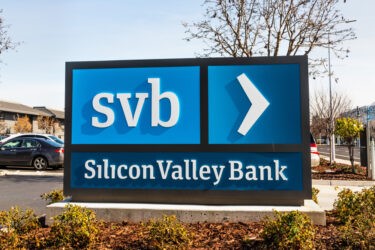What Are Dark Pools, and How to Spot Them
There are certain parts of the stock market that are above the level of any individual investor. Financial institutions often trade millions of shares at a time. These block trades could send a stock soaring or plummeting. And for that reason, the people who make them want privacy. So they frequently operate in hidden corners of the market known as “dark pools.”
These secretive trading forums operate outside of the major exchanges. They allow institutions to hide big trades from speculators and coat-tail investors. But in truth, they’re not completely dark. With the right know-how, you can spot dark pool activity and profit handsomely from it.
Let’s learn more about these mysterious and powerful back rooms of the financial system…
What Are Dark Pools?
Sometimes a big trade can whip the market into a frenzy. If ordinary investors see that an institution bought a million shares of some stock, they might clamor to buy some shares themselves. This can result in the stock becoming overvalued, which puts all participating traders at risk.
Investment banks, fund managers and government trustees have to deal in extremely high denominations of securities. It’s just the nature of their work. But they want to avoid causing a snowball effect by “showing their hands” to the whole market. So they bypass the exchange system and trade directly with other high rollers.
This is where dark pools get their name. They refer to massive pools of liquidity in which institutional investors make block trades through alternative trading systems (ATS). The private exchanges allow institutional investors to trade securities and aren’t accessible by the average investor. That way, they don’t have to post their transactions to public exchanges.
These ad hoc liquidity pools protect the market by preventing speculative crazes. But as the name implies, there is a dark side to dark pools.
The Dark Side of Dark Pools
Stock markets operate on the assumption that all available information about a stock is priced in. That’s why we trust them to determine the value of public companies. But if high-powered investors are making secret trades in a dark pool, they’re hurting that price-discovery process. The public doesn’t have information about their trades, and so they can’t react appropriately.
Lately, as public distrust of Wall Street has grown, dark pools have been cast in a very negative light. Michael Lewis’ best-seller Flash Boys cited them as one example of “rigging” in the financial system.
But as we’ve discussed, dark pools serve an important purpose by preventing market overreactions to big orders. And in truth, they’re not that secret. No one can hide a financial transaction indefinitely – especially not a big one. Dark transactions just have a delay in posting to the Consolidated Tape System, the press or an exchange.
And although their name might suggest otherwise, dark pools are actually regulated by the SEC. In a 2015 statement on dark pools, the SEC outlines the steps it started taking towards making these ATSs more transparent. Including outlining any advantages those with access to the dark pools might gain. And identifying who has access to them. This has helped ease the minds of many critics of these exchanges.
If you know where and how to look for dark trades, you can react to them ahead of the public. And that can net you big profits.
How to Spot Dark Pool Activity
There are a host of simple tricks you can use to indirectly spot activity in a dark pool. As an individual investor, you can’t really peer into the pools themselves. But you can see traces of their transactions on the public markets.
It’s like looking out the window to see how windy it is. The wind itself is invisible, but you can indirectly gauge its presence by watching the leaves blow around.
One simple way to spot dark pool activity is by monitoring the internet. Financial journalists are constantly racing to report on big institutional trades. And they’re not easily deterred by something like a private computer network.
If you don’t trust the journalists to get the scoop, then consider setting up Google Alerts for various mutual funds and other institutional investors. They are eventually required to disclose all of their trades, even if it’s a while after the fact. By ensuring you’re the first to know about dark trades, you can get ahead of the public in making money off of them.
Finally, our Chief Investment Strategist Alexander Green is very familiar with dark pool investing. His years of experience on Wall Street have taught him exactly how to spot these quiet but massive trades.






